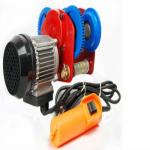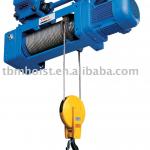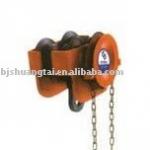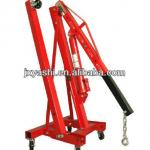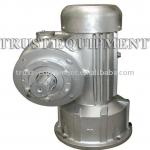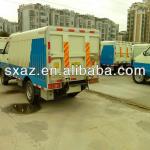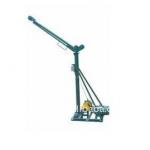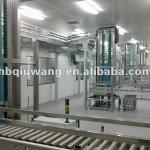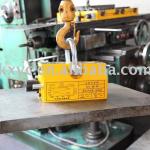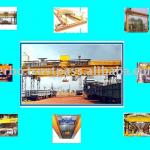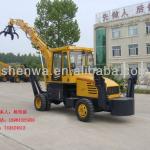MC nylon sleeve design
MC nylon sleeve allowable working condition is determined by a lot of factors, such as different formulation and molding process of the prepared material physical and mechanical properties, sleeve design, assembly method, load characteristics, speed of operation, the lubrication conditions, sleeve working environment (temperature, humidity, and the effect of impurities), while working friction condition, for grinding the material properties. Therefore, in the design of shaft sleeve, should consider the various factors.
1 shaft design and the calculation of PV
Sleeve design, the most important is to ensure the sleeve material give full play to its performance under the premise, master working conditions limit. In general, we use heat generated factors -- unit area load P and surface line speed V product PV value is used to decide the ultimate.PV value too large, easily lead to the bush temperature rise in low speed heavy load, the nylon sleeve has outstanding advantages.
The PV value calculation formula is as follows:
V= for dn/60 (1)
Type: V -- surface line speed, unit: m/s
D -- the sleeve bore, unit: M
N -- shaft speed, unit: r/min
P=W/ (DL) (2)
Type: P -- unit area load, i.e. the total load on the shaft sleeve and the shaft sleeve projection area ratio, unit: Pa
W -- sleeve by the total load, unit: N
D -- the sleeve bore, unit: M
L -- sleeve length, unit: M
2 PV value use
2.1 PV PVa limit value
At an ambient temperature of 24 ° C and specific lubricating condition, continuous operation of PV value is called the PV limit value, are denoted by PVa. In a 24 ° C and non continuous running state, to the PVa value is the basic value, using the correction coefficient of temperature and operation time correction coefficient correction table 1. Several engineering plastics PVa value.
Table 1 kinds of engineering plastics PVa value (unit: MPa.m/s)
Material type
Oil free lubrication
Periodic lubrication
Monomer casting nylon
0.11
0.57
Nylon 66
0.095
0.40
Teflon
0.035
0.045
Polyvinyl acetal
0.092
0.36
Note: continuous oil, lubricating oil for the variety and quantity changes slightly, the PV value will have big change.
2.2 ambient temperature correction coefficient T
The ambient temperature is not included due to running and the frictional heat generated so that the sleeve temperature. Temperature is high, because the axle sleeve is heated and feeble, bearing capacity to reduce. Figure 1 is the ambient temperature and the temperature correction coefficient T relationship.
The 2.3 time correction coefficient C
Sleeve only intermittent work, in the stop task this time is not to produce the friction heat, but the heat is still in progress. At this time, bush temperature gradual decline. If you work for a short period of time to stop the time, then the low heat storage, low temperature rise, the allowable values of PV higher. If the running time for over 10 minutes, it should be regarded as the continuous working state. Table 2 intermittent working condition of operation time and the time correction coefficient C between the relationship diagram, curve of 1X, 2X, 3X......Stop time for running time of multiples.
2.4 the maximum PV value
PV=PVa.T.C
(3): PVa -- type in Table 1 is checked, MPa.m/s
T -- the correction coefficient of temperature, from table 1 check
C -- the correction coefficient of time, by the watch 2 check
When the environmental temperature of 24 ° C (commonly known as room temperature) conditions, T = 1; when the continuous running, C values of 1.0. at this point, the values in Table 1 are regarded as the maximum value of PV. If PV continuous operation, when the value of <0.1, can use without oil lubrication, but the best in the assembly with dry butter. If the PV value >=O.1, it must give periodic lubrication in yellow dry oil lubricating conditions, the limit of PV value to 1.0. to ensure that the use is not a problem and effective work, should control the maximum allowable value of PV in the 0.22 - 0.24; in a circulating oil or sleeve in the oil when in use, the maximum PV value can be increased to 2.5 or 2.5 above, because the heat well.
Table 2 Effect of material load P, sliding friction velocity V, PV value and coefficient of friction
Material
Allowable stress PMPa
Allowable linear velocity V m/s
PVa MPa.m/s
Coefficient of friction
Steel shaft wear (no quenching, lubrication) mg/ (cm2.km)
Without lubrication
Lubrication
Bearing alloy
20
50
10
0.280
0.005
0/005
Bronze
10
3
15
0.120
0.01
0.03
Monomer casting nylon
10
3
10
0.156
0.0185
Not found
Cast nylon +5% graphite
10
4
12
0.080
0.015
Not found
Cast nylon +30% graphite
8
10
15
0.025
0.008
Not found
Wood clip bakelite
6
3.5
8
0.160
0.02
Not found
In the actual use of the nylon bushings in the process, sometimes the creep phenomenon, or "cold flow." the load exceeds the PV limit value when the reasons for this phenomenon.
3 shaft clearance
The 3.1 sleeve interference
Sleeve interference in practice can be pressed by experience formula:
H=0.002D 4.
H -- sleeve interference, mm
D -- shaft diameter, mm
Shaft diameter, wall thickness increased accordingly, press fit tensioning force is big, the amount of surplus desirable small; instead, it takes bigger. With large ratio of length and diameter of the shaft sleeve, with little interference, and takes bigger.
MC nylon material coefficient of thermal expansion than the steel by about 10 times, so the shaft in operation due to frictional heating caused by expansion deformation so that the reduced diameter, the influence of friction surface clearance.
3.2 shaft clearance
A=A1+A2+A3+A4 5.
A -- gap sleeve, mm
A1 -- -- Basic gap, mm, its values from Figure 3 find out
-- A2 -- shaft liner wall thickness change caused by gap, mm,
A2=K.tK: temperature rise caused by shaft wall thickness variation correction coefficients, a figure 4 find out
T: sleeve wall thickness, mm
A3 -- -- pressure caused by the interference fit clearance, mm, as shown in Figure 5
A4 -- -- due to moisture absorption causes the sleeve wall thickness change, namely when the relative humidity is 100% or in water use, use it to correction by moisture absorption and reduce the gap, A4=0.055t
Or use the simple formula: A= (0.005 -- 0.006) d0 (6)
D0 assembly shaft diameter, mm
3.3 shaft wall thickness
As a result of MC nylon thermal conductivity coefficient than the metal of small, so do the bushings, wall thickness should be as thin as possible. If using a sliding friction speed is low, the load is not very big, but when running under the very big impact, this should be made of thick bush. If the sleeve wall is thin, insufficient rigidity, and the metal jacket the composite use





